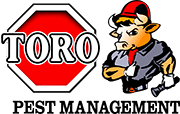Termites are creatures no one wants to see in their home. Since the signs of termite infestation often go unnoticed for a long time, it is usually very difficult to control them until the damage is already done.
If you have been seeing mud tubes near your home’s foundation, or you have been seeing winged termites near your patio, porch or foundation, then you definitely need to investigate if there is any infestation.
So, what happens when you find out that termites have invaded your home? Well, they can be eradicated. Leaving termites untreated or improperly treated is something that can lead to severe and costly damage to your property. But just how difficult is it to treat termites?
While it can be tempting to try to eradicate termites in your home on your home, the truth is that you are most likely to fail. So, what should you do?
Hire a professional
The best way to deal with termites is to seek the help of a professional. This goes without saying. It is the best way to go as far as proper termite eradication and control is concerned.
Treated termites usually requires special skills as well as detailed knowledge of building construction. This is what makes it difficult to treat termites especially if you are not a professional.
A hired professional has all it takes to identify critical areas properly and find out the exact areas through which termites can enter your home. These areas are usually very difficult to access especially for a layperson.
Professionals have also gone through the training on what heavy-duty tools to use in termite control, eradication, and treatment. These tools include spray tanks and drills.
Many termite infestations usually require the use of liquid pesticides injected in large quantities into the foundation and ground, which is not normally feasible for any average homeowner. In most cases, the products readily available for purchase for the homeowners will not often eradicate termites fully.
Treatment for different types of termites
Different methods are usually used to target a particular behavior of drywood termites and subterranean termites. Also, the treatment should depend on the uniqueness of a home in which termites have invaded.
For subterranean termites, this treatment and prevention plan basically includes direct wood treatment, conventional liquid treatment, bait stations, or monitoring.
For drywood termites, the treatment and prevention plan basically includes heat treatment or whole structure gas fumigation.









